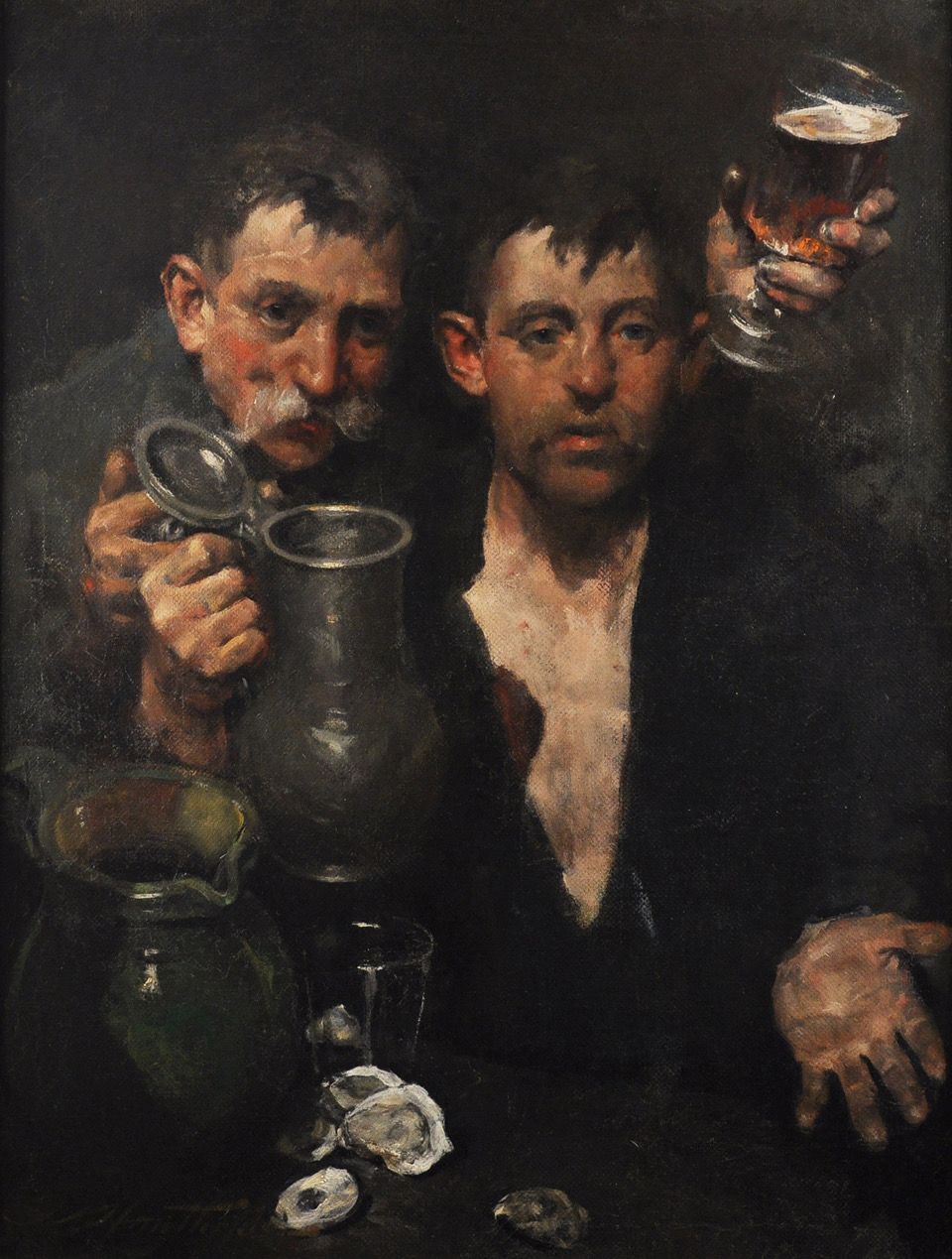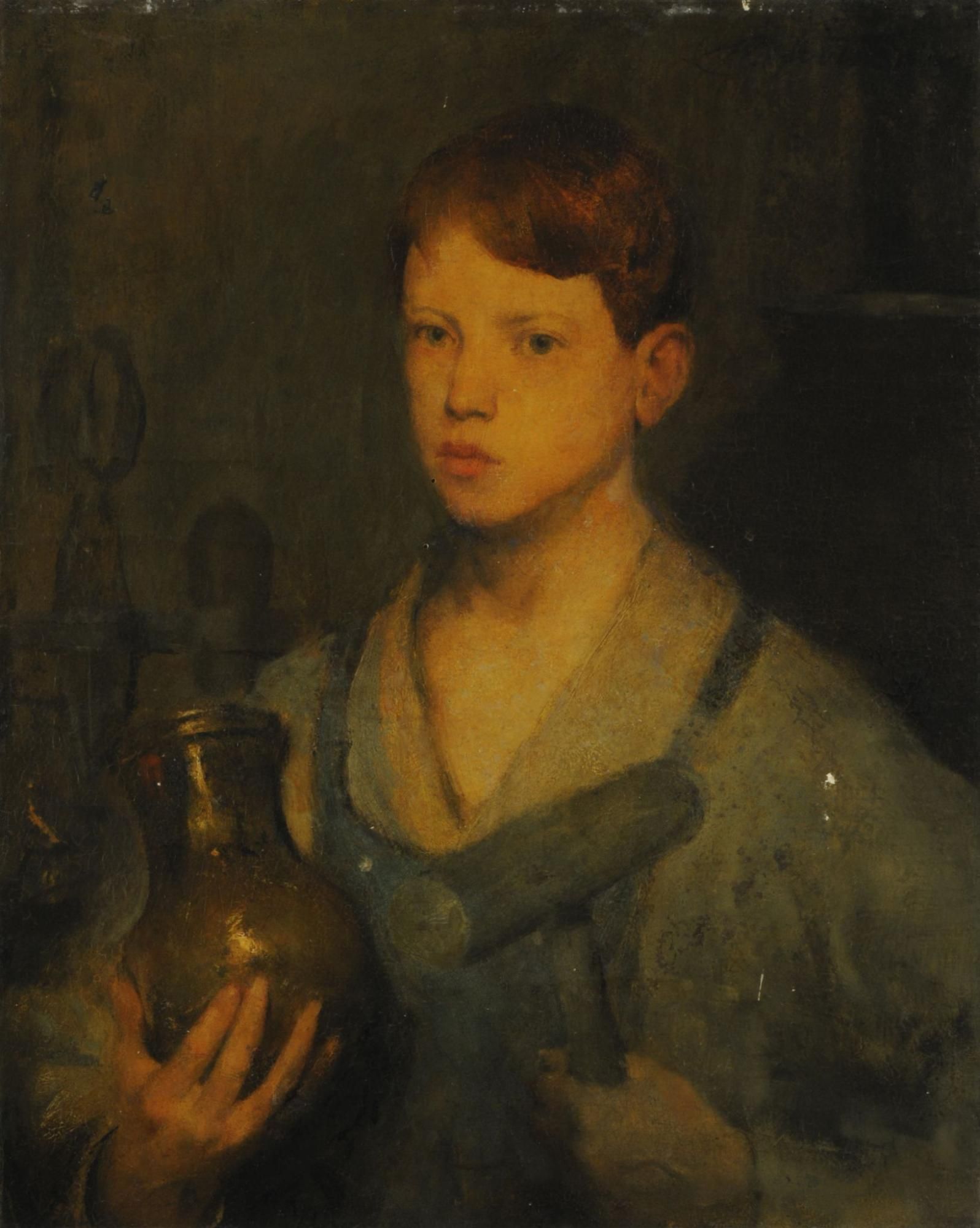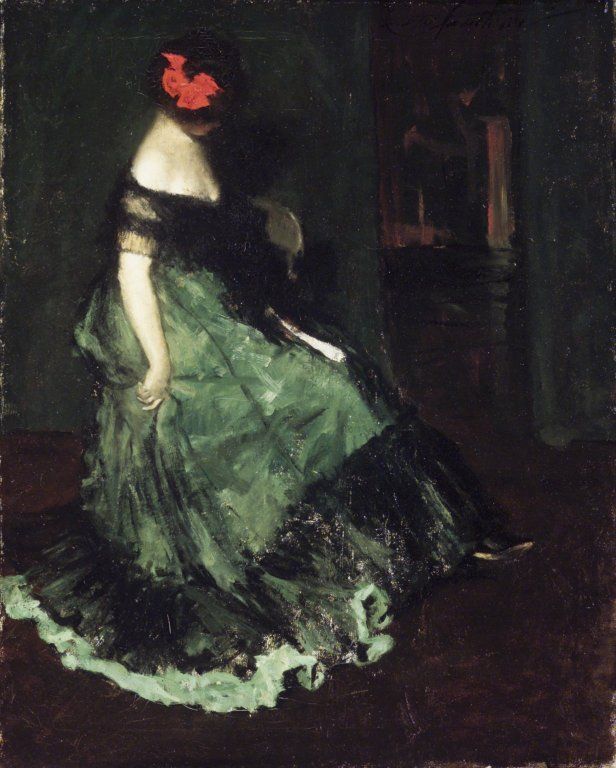Charles Webster Hawthorne (1872–1930)
The Oyster Eaters, 1903
Oil on canvas
McMullen Museum of Art, Boston College, Gift of Alexandria & Michael N. Altman P’22, ’24, ’26, 2021.2

John McCoy
Assistant Director, McMullen Museum

“Genre painting” is the term given to paintings of unnamed, ordinary people engaged in quotidian scenes of labor or leisure, as opposed to depicting famous persons engaged in historic events. Emerging from Dutch and Flemish traditions in the seventeenth century, by the nineteenth and early twentieth century genre painting was well-represented in America, where scenes of common life often focused on working-class or even impoverished subjects. The Oyster Eaters has as an alternative title Bums Drinking, underscoring the rough appearance and sooty hands of the two characters, who appear both to raise a toast and offer a seat to the viewer.
While oysters had long been a luxury food served as a delicacy, by the latter half of the nineteenth century American oyster production had surged enough for oysters to sell one for a penny, making them a popular source of protein for the working class. Oyster houses, also called oyster saloons, served the shellfish with beer and wine, particularly at the lunch hour. The simple presentation of the raw food underscores the men’s modest means, as does the beer they drink. Beer had only recently become a staple for the masses, following advancements in production and the introduction of pasteurization. The increased access to cheap alcohol also fueled a resurgence of temperance movements. The Anti-Saloon League brought pressure on local legislatures to close bars. Waves of German immigration in the nineteenth century gave rise to xenophobia, and many saw beer as a marker of German culture to be avoided. Thus, Hawthorne’s subject carries political as well as class significance.
While his paintings’ subject matter was often drawn from the streets, Hawthorne’s work was not spontaneous; instead he carefully staged his compositions with models and props. The covered pewter tankard held open by one of the men here appears identical to the one held by his Apprentice of four years later, and may in fact be the same vessel (see image).
In addition to his genre paintings Hawthore painted scenes of high society, especially of elegant women in opulent settings (see image). He founded the Cape Cod School of Art in 1899, the first outdoor school for figure painting in America. Notable students of Hawthorne were John Noble, Richard Miller, Max Bohm, and Norman Rockwell, whose work can also be seen as a continuation of the genre painting tradition.


